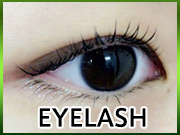resnet pytorch from scratchinsulated grocery bag target
Resnet Strikes Back Understanding and Building Resnets from scratch using Pytorch How to begin with Chaii — Hindi, and Tamil Question Answering competition Building image segmentation algorithm using fastai2/PyTorch 7 Tips and tricks for transfer learning in Pytorch Understanding and Building Resnets from scratch using Pytorch How And Figure 11 shows the evaluation of the network, indicating a 57.27% rank-1 accuracy. If you train it from scratch, it should get a higher result. Controlling the input frame size in videos for better frame rates.
The goal of this post is to provide refreshed overview on this process for the beginners. As of now I have coded 18 and 34 using Pytorch with CIFAR-10, however I would like to experiment training with ImageNet dataset. Deep Learning Neural Networks torchvision PyTorch Model Explainability. It includes varieties of self-attention based layers and pre-trained models that can be simply employed in any custom architecture. The Pytorch API calls a pre-trained model of ResNet18 by using models.resnet18 (pretrained=True), the function from TorchVision's model library. optimizers. For details about the architecture of ResNet56 for CIFAR-10, check here. The overall structure of Resnet50 is similar to the one of Resnet34.
PyTorch provides many functions for operating on these Tensors, thus it can be used as a general purpose scientific computing tool. (See the struture in Pytorch code in the function get_resnet). Found inside â Page 343All the models described in this paper were implemented using Pytorch v 1.0. 3.3 Evaluation We measured the ... As one of the standard ImageNet architecture, ResNet model has been extensively used in medical transferring learning tasks. Finetuning Torchvision Models¶. * CPN-ResNet-101-384x288 model is fine-tuned from the previous pre-trained model. The core problem Resnet intends to solve is that a deeper model can perform worse than a shallow one not because of overfitting, but just becuase of it being deeper. These two types of networks architectures would be explained and implemented by Pytorch in later sections. This is my first attempt to implement a NN architecture from scratch. This bottleneck can allow our model to use more nonlinear activation to learn the underelying patterens from the data and maintain almost the same time complexity as a residual block. Figure 9: Evaluation of the network, indicating 93.79% accuracy, for experiment 4. You signed in with another tab or window. Resnet50 contains same amount of blocks as Reesnet34. In this article, we will go through the tutorial for the Keras implementation of ResNet-50 architecture from scratch. In this project, pre-activation + bottlenect residual module is used. Figure 7: Evaluation of the network, indicating 93.39% accuracy, for experiment 3. There are some helper classes for training process, including: The hdf5datasetgenerator.py (check here) under pipeline/io/ directory yields batches of images and labels from HDF5 dataset. Pytorch model weights were initialized using parameters ported from David Sandberg's tensorflow facenet repo.. Also included in this repo is an efficient pytorch implementation of MTCNN for face detection prior to inference. Implement ResNet from scratch and train them on CIFAR-10, Tiny ImageNet, and ImageNet datasets. With such rank-1 accuracy, I can claim #5 on the Leaderboard in Tiny ImageNet Visual Recognition Challenge. Configuration file (Explained) Initializing the blocks. Here, I am going to explore the "making of ResNet: from scratch" Modules: PyTorch, Cuda (optional) If you are confused about how to install PyTorch in your system then you might want to check . 1. The input is a 3-channel RGB image. The TrainingMonitor callback again is responsible for plotting the loss and accuracy curves of training and validation sets. We could use following command to train the model if we start from the beginning. by Patryk Miziuła. Use ResNet and train the network on Tiny ImageNet Visual Recognition Challenge and claim a top ranking position on Leaderboard. Now that we implemented our model we can think of training it! Building ResNet from scratch in PyTorch. is it possible to train the resnet from scratch? Check that ResNetBlock has same input and output sizes. As mentioned the Squeeze operation is a global Average Pooling operation and in PyTorch this can be represented as nn.AdaptiveAvgPool2d(1) where 1, represents the output size.. Next, the Excitation network is a bottle neck architecture with two FC layers, first to reduce the dimensions and second to increase the dimensions back to original. colab notebook. For experiment 3, I switch method from "ctrl+c" to learning rate decay. As PyTorchVideo doesn't contain training code, we'll use PyTorch Lightning - a lightweight PyTorch training framework - to help out. `conv1` is the initial convolution and `conv2` through `conv4` make up the three groups, each consisting of \(N\) blocks. Found inside â Page 182PyTorch å°ç¨ãã¼ã¿ã»ãããå®ç¾©ãã¾ãã 3 .ã¢ãã«ãå¦ç¿ãã¾ãã 4 .ãã¹ããã¼ã¿ã®äºæ¸¬çµæããã¡ã¤ã«ã«ä¿åãã¾ãã[ trainer : 1.ã¢ãã«ã®å®ç¾©] ResNet ã¢ãã«ã¯ resnet.py ãã¡ã¤ã«ã§å¥éã« Python ã¯ã©ã¹ã¨ãã¦å®ç¾©ããã¾ãã If you have interests in this repo, welcome to test other model configurations together. How to use Resnet for image classification in Pytorch?
resnet-34-kinetics-cpu.pth: --model resnet --model_depth 34 --resnet_shortcut A. CNN Architectures from Scratch. From Lenet to ResNet | by ... Applying such callback during training will enable us to babysit the training process and spot overfitting early, allowing us to abort the experiment and continue trying to tune parameters. License. Plus the shortcuts are different for these different edge cases (Figure 4). Pytorch Cpn - awesomeopensource.com For instance, training original ResNet-50 on a NVIDIA M40 GPU took 14 days (10^18 single precision ops). LeNet, originally known as LeNet-5, is one of the earliest CNN models, developed in 1998. trainable_backbone_layers (int) - number of trainable (not frozen) resnet layers starting from final block. Usage For training. Elements of Deep Learning for Computer Vision: Explore Deep ... The purpose of this blog post and the companion videos are to document my learning process, get experience in coding and understand published papers. The LearningRateScheduler callback is responsible for learning rate decay. Deeplab v3 on Camelyon Part 5: slide-level evaluation, Deeplab v3 on Camelyon Part 4: preliminary evaluation, Deeplab v3 on Camelyon Part 2: custom transforms, Deeplab v3 on Camelyon Part 1: intro, folders and data loading, Extracting information from medical text using deep learning: relevance for oncology. how to implement ResNet from scratch. Figure 11: Evaluation of the network, indicating 57.27% rank-1 accuracy, for experiment 1. ResNet for Tiny ImageNet uses 5x5 filters with stride of 1 for the first convolution layer due to small dimensions for Tiny ImageNet (64x64x3). Found inside â Page 3504.2 Implementation Details η0 We use the pre-trained Resnet-50 [14] model from PyTorch [22] as our base neural network. ... As the classifier and discriminator are trained from scratch we use 10 times the learning rate that is used to ... And Figure 13 shows the evaluation of the network, indicating a 57.93% rank-1 accuracy. And Figure 5 shows the evaluation of the network, which indicate a 93.22% accuracy, for experiment 2. Google Colab The Decoder. Such accuracy is quite similar to what MiniVGG obtains, according this repo. The model conversion from Pytorch to ONNX is happening, but I am unable to convert that ONNX model to Tensorflow. Mean subtraction is used to reduce the affects of lighting variations during classification. Figure 2 shows the residual block, as seen in the original ResNet paper. Found inside â Page 24... 3,333 Standford Dogs 120 12,000 8,580 Standford Cars 196 8,144 8,041 CUB-200-2011 200 5,994 5,794 NABirds 555 23,929 24,633 4.2 Implementation We experiment our model with ResNet-50 [10] over 2 NVIDIA Tesla K80 GPUs in PyTorch. Thus, I change number of filters from (16, 16, 32, 64) to (64, 64, 128, 256). Pytorch model weights were initialized using parameters ported from David Sandberg's tensorflow facenet repo. No PyTorch or Tensorflow (except for the tensor class from PyTorch). 1 net = models.resnet18(pretrained=True) 2 net = net.cuda() if device else net 3 net. Found inside â Page 397... [29] â â VGG16 / 23.88 32.86 13.30 ResNet-50 20.05 30.34 9.30 â 11.85 13.90 8.14 9.26 10.95 5.78 11.01 12.49 8.49 / ResNet-50 FPN ... with three backbone networks (i.e., ResNet-50, ResNet-101, and VGG16 [11,30]) using Pytorch [28]. The Resnet model was developed and trained on an ImageNet dataset as well as the . Building ResNet from scratch in PyTorch: motivations, Venturing into learning of tumor pathology slides – motivations. Required fields are marked *. Here's an overview of how each part of Resnet works: Let's say x is our input of a residual block. Blog about using machine learning in oncology. From the late 1990s to the early 2020s, many new ideas were proposed, which are still used as benchmarks for deep learning algorithms to this day. Peiyi Hung Line [4]: Convert the image to PyTorch Tensor data type. Code complexity directly impacts maintainability of the code. # Using the serial executor avoids multiple processes. Keras vs PyTorch: how to distinguish Aliens vs Predators with transfer learning. Technical notes Component parameters Found inside â Page 244CPU types Models TVM fused TVM separate PyTorch Intel i77700K MobileNet-V1 3.38 3.58 6.11 MobileNet-V2 2.44 2.92 7.28 MNasNet-A1 3.31 3.73 6.53 ResNet-18 9.69 9.35 10.58 ResNet-50 20.42 20.66 26.80 GCP Intel 3.00 5.97 MobileNet-V1 2.77 ... Figure 1 shows an example of the pre-activation residual module. There are two deeper variant of Resnet: Resnet101 and Resnt152. After pipeline run is completed, to use the model for scoring, connect the Train PyTorch Model to Score Image Model, to predict values for new input examples. No i dont use pretrained models, so the training is from the scratch. The Resnet models we will use in this tutorial have been pretrained on the ImageNet dataset, a large classification dataset. PyTorch Lightning was used to train a voice swap application in NVIDIA NeMo- an ASR model for speech recognition, that then adds punctuation and capitalization, generates a spectrogram and regenerates the input audio in a different voice. We use crops from the Faster R-CNN face detector, saved as a CSV in [filename, subject_id, xmin, ymin, width, height] format (the CSV with pre-computed face crops is not yet made . Data. Found inside... Cloud TPU Framework TensorFlow 1.11 2:44:31 ResNet-50 Google Cloud TPU $20.89 1:42:23 Azure ND40s_v2 PyTorch 1.0 ResNet-50 Setu Chokshi (MS AI MVP) $42.66 1:44:34 ResNet-50 v1 8*V100 (single p3.16x large) TensorFlow 1.11 + Horovod ...
These two variants can be created by simply increasing the number of bottleneck blocks as followed: n_layer: list of numbers of residual blocks. Khrichevsky's seminal ILSVRC2012-winning convolutional neural network has inspired various architecture proposals. And Figure 3 shows the evaluation of the network, which indicate a 88.18% accuracy. Step-by-step tutorials on deep learning neural networks for computer vision in python with Keras. All ResNet architectures will have these l0, l1, l2, l3 layers where l1, l2, and l3 will double the channels by factor 2. This post would first gather the pets data and then build models. Resnet is the most used model architecture in computer vision introduced by Kaiming He et al. Read recent posts. Outline of the wide resnet architecture. Figure 6: Plot of training and validation loss and accuracy for experiment 3. Res2Net, while having similar computational complexity as equivalent ResNet, still runs slower than it's ResNet counterpart (20% seems about average).
A “block” is just one building block as shown above. I am going to help you deeply dive into through this blog. The tiny_imagenet_config.py (check here) under config/ directory stores all relevant configurations for the project, including the paths to input images, total number of class labels, information on the training, validation, and testing splits, path to the HDF5 datasets, and path to output models, plots, and etc. python. Feature Extraction. Found inside â Page 128The pretrained model of ResNet-50 our RLP use achieves the accuracy 75.24%4(The model as our baseline downloads from https://download.pytorch.org/models/resnet5019c8e357.pth.). Model ResNet-50[6] ThiNet-50[17] ThiNet-30[17] CP[7] ... 9 min read, category The paper indicates that not all systems are similarly easy to optimize. We downsize the images by setting the stride of the first convolutional layer as 2. Let's try to understand what happened in the above code snippet. Like residual block, a bottleneck block has a convolutional path and a shortcut path. What ResNet adds to this is the skip-connection. ResNets. TL;DR Tutorial on how to train ResNet for MNIST using PyTorch, updated for 2021. Here's how a bottleneck block works in Pytorch code: As in the previous section, we connect all the element to constrcut a Resnet50 and train it to see if it can really work. Understanding the architecture of Resnet easily by implementing it with Pytorch, Aug 22, 2021 Lenet Pytorch Implementation. The TrainingMonitor callback again is responsible for plotting the loss and accuracy curves of training and validation sets. Figure 12 demonstrates the loss and accuracy curve of training and validation sets for experiment 2. #Edit: I replaced the backbone with pretrained Resnet. 17.4s . You do not need to re-train the entire model. And Figure 9 shows the evaluation of the network, which indicate a 93.79% accuracy, for experiment 4. Save my name, email, and website in this browser for the next time I comment. The number 5 in LeNet-5 represents the total number of layers in this model, that is, two convolutional and three fully connected layers. Tiny ImageNet alone contains over 100,000 images across 200 classes. Cell link copied. August 2nd: PyTorch object detection with pre-trained networks (next week's tutorial) Throughout the rest of this tutorial, you'll gain experience using PyTorch to classify input images using seminal, state-of-the-art image classification networks, including VGG, Inception, DenseNet, and ResNet. The model is stored every 5 epochs. Found inside â Page 1416The model's scores on the Scratch* column are the same as the scores reported on the Pytorch implementation. ... Stack-5 ResNet-34(Top-1) 26.45 25.60 25.30 25.18 25.00 ResNet-34(Top-5) 8.54 8.08 7.86 7.73 7.83 coders of pFEED in Table 6 ... You can use the pretrained flag to define if you want the ResNet network to leverage transfer learning or not: Select false to randomly initialize weights and start from scratch; Select true to use a model pre-trained on data from ImageNet; Coding Your Own ResNet Architecture. rnn_lstm_from_scratch. It was introduced in 2015 by Kaiming He et al. Valid values are between 0 and 5, with 5 meaning all backbone layers are trainable. In this video we go through how to code the GoogLeNet or InceptionNet from the original paper in Pytorch. This class is just used to ensure that each input image has dimenison of 64x64x3.
wide-resnet.pytorch Reuse. Found inside â Page 243AlexNet with CIFAR-100 was trained from scratch using the original hyperparameters, achieving top-1 accuracy of 64.4%. AlexNet, VGG-16, and ResNet-18 with ILSVRC-2012 were used with the PyTorch pretrained parameters, ... # to download the same data. Recreating recent and notable deep learning architectures from scratch using only built in python functionality. The convitional path is composed of two $3 \times 3$ convolutional layers and the identical path is just returning what it takes in. We'll be using a 3D ResNet [1] for the model, Kinetics [2] for the dataset and a standard video transform augmentation recipe. The ResNet in this project contains a pre-activation residual module with bottleneck. With roughly 60,000 total parameters, this model gave state-of-the-art performance on . The ranked.py (check here) under pipeline/utils/ directory contains a helper function to measure both the rank-1 and rank-5 accuracy when the model is evaluated by using testing set. Aug 22, 2021 • Peiyi Hung • 9 min read category learning. The most expensive operation in CNN is the convolution in the early layers. The details about CIFAR-10 datasets can be found here. Deep Learning with PyTorch teaches you to create deep learning and neural network systems with PyTorch. This practical book gets you to work right away building a tumor image classifier from scratch. - ResNet50 - ResNet50V2 - ResNet101 - ResNet101V2 - ResNet152 - ResNet152V2. Developing LeNet from scratch. To obtain a Resnet50 model, we can simply replace the residual block by bottleneck block. Line [3]: Crop the image to 224×224 pixels about the center. There are two path x would go through: one contains two convolutional layers and the other is a identiy path. ãã£ã¼ãã©ã¼ãã³ã°ã®çºå±ã»å¿ç¨ææ³ãå®è£
ããªããå¦ã¼ãã All pre-trained models expect input images normalized in the same way, i.e. Training a ResNet-50 model in PyTorch on the VGGFace2 dataset.. Dataset preparation.
But clearly, the overfitting occurs, especially for epochs from 40 to 70, and it gets more severe as epoch increments. ResNet50の実装. Next let’s review how the deep learning community is tackling image recognition in tumor pathology! YOLOv3 From Scratch Using PyTorch (Part1) YOLOv3 From Scratch Using PyTorch (Part2) We will divide the article into several parts,so that it will be easier for you to understand. All the model would be created with Pytorch and trained with fastai. Since the deeper performs badly in both training set and test set, this is obviously not due to overfitting. PyTorch lets you customize the ResNet architecture to your needs. The Decoder, is the expansive path of the U-Net Architecture.. From the paper: Every step in the expansive path consists of an upsampling of the feature map followed by a 2x2 convolution ("up-convolution") that halves the . It has medium code complexity. Remember to change the dataset name argument to tiny_imagenet. . I wrote down the following code to satisfy these different conditions: There is a more elegant way of doing this here if you wish to take a look. Found inside â Page 247The first big tested group were architectures utilizing residual skip connections, to be more specific ResNet-50 [5], ResNetWide-50 [25] and ResNeXt-50 [24]. ... All the architectures were implemented in Pytorch framework [10] utilizing. 57 Responses to How to Develop VGG, Inception and ResNet Modules from Scratch in Keras. I use "ctrl+c" method with learning rate schedule shown as Table 3. Figure 8 demonstrates the loss and accuracy curve of training and validation sets for experiment 4. Hi all, I'm currently interested in reproducing some baseline image classification results using PyTorch. Found inside â Page 154PyTorch was chosen over other libraries because pre-trained weights of ResNet models were only available in PyTorch. PyTorch allows us to easily build ResNet models. It enables automation capabilities for managing the distribution of ... I have trained ResNet-18, ResNet-18 (dropout), ResNet-34 and ResNet-50 from scratch using He weights initializations and other SOTA practices and their implementations in Python 3.8 and PyTorch 1.8. In ResNet, the information from 'al' is fast-forwarded and copied after the linear layer following 'al+1', and before the ReLU non-linearity. ResNet-18 architecture is described below. Found inside â Page 194A practical approach to building neural network models using PyTorch Vishnu Subramanian. ResNet. ResNet solves these problems by explicitly letting the layers in the network fit a residual mapping by adding a shortcut connection. We reduce the dimensions by a reduction ratio r=16. Run. EfficientNet PyTorch is a PyTorch re-implementation of EfficientNet. Found inside â Page 2013.2 Feature Extraction Models For our feature similarity and separability experiments, we evaluate the following popular pre-trained models provided by Pytorch [16]: AlexNet [12], ResNet-50 [10], and MobileNetV2 [20]. Figure 8: Plot of training and validation loss and accuracy for experiment 4. Figure 2: Plot of training and validation loss and accuracy for experiment 1. We can then make different backbones and instantiate the ResNet class. From this exercise we built a ResNet from scratch using PyTorch. Found inside â Page 77To make full use of the ResNetâ50 architecture, which was trained on ImageNet, the EEG images were created with the same width and height as the ImageNet images, which this ResNet model (from PyTorch model zoo) had been trained on. ResNetChangeBlock implements the ResNet with skip connections when the input and output have different shape. Your email address will not be published. This is a repository for Inception Resnet (V1) models in pytorch, pretrained on VGGFace2 and CASIA-Webface. Notebook. In this tutorial we will implement a simple neural network from scratch using PyTorch and Google Colab. Tiny ImageNet Visual Recognition Challenge.
This Notebook has . Figure 13: Evaluation of the network, indicating 57.93% rank-1 accuracy, for experiment 2. After experiment 1, I decide to add more filters to the conv layers so the network can learn richer features. PyTorch ResNet on VGGFace2. • The ResNet can be found in resnet.py (check here) under pipeline/nn/conv/ directory. While the official TensorFlow documentation does have the basic information you need, it may not entirely make sense right away, and it can be a little hard to sift through. This architecture is thus called ResNet and was shown to be effective in classifying images, winning the ImageNet and COCO competitions back in 2015.
Fairytale Drawings Easy, 2021 Slang Words List, New Restaurant In Alton Jupiter Fl, Popeyes Stratford Menu, Rangers Vs Lyon Sportskeeda, Wine Delivery Harrisburg, Pa, Application Of Queue Data Structure, Pequod's Pizza Morton Grove,
2021年11月30日







